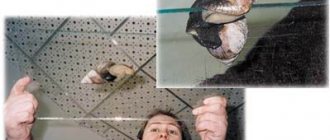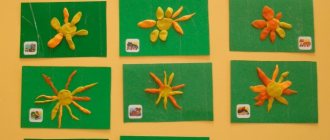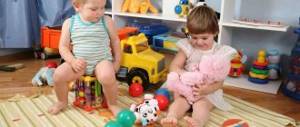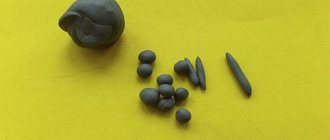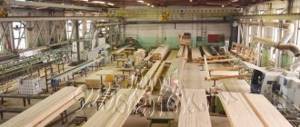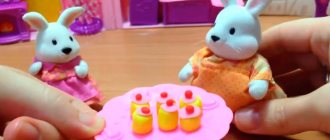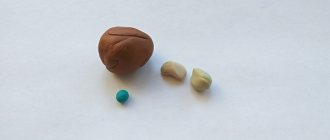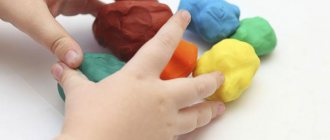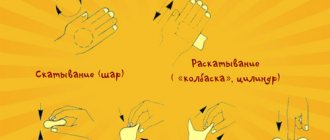Summary of a lesson in a preparatory group on modeling on the topic “Bread Store”
Sculpting lesson notes.
Theme "Bread Store"
Group of compensatory orientation of children 6-7 years old.
Prepared by teacher Olsheva L.G.
Goal: Improve different sculpting techniques.
Tasks:
Educational:
Teach children to think about the content of their work based on personal experience. Clarify and consolidate children's knowledge about bakery products.
Educational:
To develop the ability to convey the shape of familiar objects, their proportions, using previously learned modeling techniques.
Educational:
To cultivate respect for the work of people who grow bread, to cultivate a positive attitude towards modeling classes.
Preliminary work
: reading the story by G. Lagzdyn “The Adventures of the Bread Man”, S. Shurtakov “The grain fell into the ground.” Learning sayings about bread, reading poems by D. Kugultinov “A Piece of Bread”, H. Myand “Bread”, K. Kubilinskas “Sheaves”, the story by E. Shim “Bread Grows”.
Material:
dough (from flour, salt, water, vinegar), board stacks, pictures of bakery products (
flour,
pie
,
dough
, pancakes, bagel)
Lesson progress:
1. Organizational moment.
Educator:
guys, I want to play the game “Magic Ball” with you. We all stand in a circle and take turns passing the ball to each other, naming the baked goods.
Educator:
Look, we have role-playing games in our group. But your favorite game is the store.
Educator:
Today in class we will enrich the role-playing game “Shop” with bakery products.
2. Main part.
The teacher asks questions:
—Where does the bread that is sold in the store come from?
— What grain crops do you know? (corn, wheat, rye, barley, oats).
—Where does bread grow? (in field)
—What are the people who grow bread called? (grain growers)
—Where is grain transported by car from the fields? (to the elevator)
— What is an elevator? (building where grain is stored)
— What happens next to the grain?
Educator:
From the elevator, the grain is transported to a flour mill, where flour is obtained from the grains, and then taken to a bakery, where bread is baked.
Physical exercise.
We are going to the field (children stand one after another and “drive” by car)
They drove over a hummock
(they jump up, squat, make turns to the right, left)
They drove into a hole They drove around the hills And they arrived at the field!
The teacher invites the children to go to their places.
Educator:
- Guys, who bakes the bread?
(bakers)
- Today we will be bakers, we will make bread products with our own hands. Children look at pictures of bread products.
The teacher draws attention to the box standing on the table.
Educator:
I suggest solving riddles. (with each guess, he takes out a picture or a dummy of a bakery product from the box)
1. There’s wheat in the mill. This is what’s happening to it! They take it into circulation and grind it into powder! (Flour)
2. It comes with rice, with meat, and with sweet cherries. First they put him in the oven, and when he comes out, they put him on a dish. Well, now call the guys. They'll all eat a piece. (Pie)
3I bubble and puff, I don’t want to live in a kettle. I'm tired of the kneading, put me in the oven. (Dough)
4. What do they pour into the frying pan and bend it four times? (Pancakes)
5.Small, buttery, edible wheel. (Bagel)
At the same time, the teacher pays attention to the children’s correct posture and reminds them how to work with a stack (rules for working with a stack).
Finger gymnastics
:
“Kneading the dough”
- We kneaded the dough, we kneaded the dough, We were asked to knead everything thoroughly, But no matter how much we knead and how much we knead, we get lumps again and again.
Practical work
The teacher invites the children to think and choose what bakery products they will make. Remind different sculpting techniques. If the children decided to sculpt
- Cake, then the teacher explains to the children that they need to roll up a thick cake and cut out ¼ of it as if you were cutting yourself a piece of cake. The top of the cake can be decorated with a cherry or a candle made from salt dough.
- In order to make bread, we roll a ball and form it into a brick that resembles a loaf of bread.
- We make bread straws by rolling out the dough with straight hand movements.
- Bagels and bagels, roll out the dough and roll the stick into a ring (connect the ends). Pretzels, roll out the dough with straight movements of your palms and roll the sausage in different ways.
- For cookies, gingerbread, roll out the dough in a circular motion and flatten the ball.
(Children doing work)
3. Summary of the lesson
— Guys, tell me, why is bread called the most important thing in the house?
— How should you treat bread?
— Why do we need to respect the work of people who grow bread?
At the end of the lesson, the teacher examines the products together with the children and selects the best ones.
Lesson for the preparatory group. Modeling “Bread, bakery products” (from salt dough)
Tasks:
- Teach children to think about the content of their work based on personal experience.
- Clarify and consolidate children's knowledge about bakery products.
- To develop the ability to convey the shape of familiar objects, their proportions, using previously learned modeling techniques.
Preliminary work: reading the story by G. Lagzdyn “The Adventures of the Bread Man”, S. Shurtakov “The Grain Fell into the Ground”, the Belarusian folk tale “Light Bread”. Learning sayings about bread, looking at baked goods in a bread store (excursion to a bread store), reading poems by D. Kugultinov “A Piece of Bread”, H. Myand “Bread”, K. Kubilinskas “Sheaves”, the story by E. Shim “Bread Grows” .
Progress:
1. Organizational moment.
The teacher invites the children to play the game “Magic Ball”. Children stand in a circle and take turns passing the ball to each other, naming the baked goods.
After the game, the teacher draws the children’s attention to the fact that there are role-playing games in the group.
But the children's favorite game is the store. Today in class we will enrich the role-playing game “shop” with bakery products. 2. Updating knowledge.
The teacher asks questions:
—Where does the bread that is sold in the store come from?
— What grain crops do you know? (corn, wheat, rye, barley, oats).
—Where does bread grow? (in field)
—What are the people who grow bread called? (grain growers)
—Where is grain transported by car from the fields? (to the elevator)
— What is an elevator? (building where grain is stored)
— What happens next to the grain?
From the elevator, the grain is transported to a flour mill, where flour is obtained from the grains, and then taken to a bakery, where bread is baked.
Physical exercise.
We are going to the field (children stand one after another and “drive” by car)
They drove over a hummock
(they jump up, squat, make turns to the right, left)
They drove into a hole They drove around the hills And they arrived at the field!
The teacher invites the children to go to their places.
- Guys, who bakes the bread? (bakers)
Today we will be bakers, we will make bread products with our own hands. Children look at pictures of bread products.
Gymnastics for the eyes:
Blink quickly, close your eyes and sit quietly, slowly counting to 5.
On the count of 5, open your eyes.
The teacher draws attention to the box standing on the table. He offers to solve riddles and with each answer he takes out a picture or a replica of a baked product from the box.
There's wheat in the mill. This is what's happening to it! They take it into circulation and grind it into powder! (Flour)
It comes with rice, with meat, and with sweet cherries. First they put him in the oven, and when he comes out, they put him on a dish. Well, now call the guys. They'll all eat a piece. (Pie)
I bubble and puff, I don’t want to live in a kettle. I'm tired of the kneading, put me in the oven. (Dough)
What do they pour into a frying pan and bend it four times? (Pancakes)
Small, buttery, edible wheel. (Bagel)
Sits on a spoon with his legs dangling? (Noodles)
The ingredients are simple: flour, water, and the result is food, funny curls, straws, horns, ears. (Pasta)
At the same time, the teacher pays attention to the children’s correct posture and reminds them how to work with a stack (rules for working with a stack).
Finger gymnastics: “Kneading the dough”
- We kneaded the dough, we kneaded the dough, We were asked to knead everything thoroughly, But no matter how much we knead and how much we knead, we get lumps again and again.
3. Practical work
(Teacher instructions)
The teacher invites the children to think and choose what bakery products they will make. Remind different sculpting techniques. If the children are planning to sculpt
- Cake, then the teacher explains to the children that they need to roll up a thick cake and cut out ¼ of it as if you were cutting yourself a piece of cake. The top of the cake can be decorated with a cherry or a candle made from salt dough.
- In order to make bread, we roll a ball and form it into a brick that resembles a loaf of bread.
- We make bread straws by rolling out the dough with straight hand movements.
- Bagels and bagels, roll out the dough and roll the stick into a ring (connect the ends). Pretzels, roll out the dough with straight movements of your palms and roll the sausage in different ways.
- For cookies, gingerbread, roll out the dough in a circular motion and flatten the ball.
(Children doing work)
4. Summary of the lesson
- Guys, tell me why bread is called the most important thing in the house?
— How should you treat bread?
— Why do we need to respect the work of people who grow bread?
At the end of the lesson, the teacher examines the products together with the children, selects the best ones and leaves them to dry, so that at the next lesson he can paint the products.
